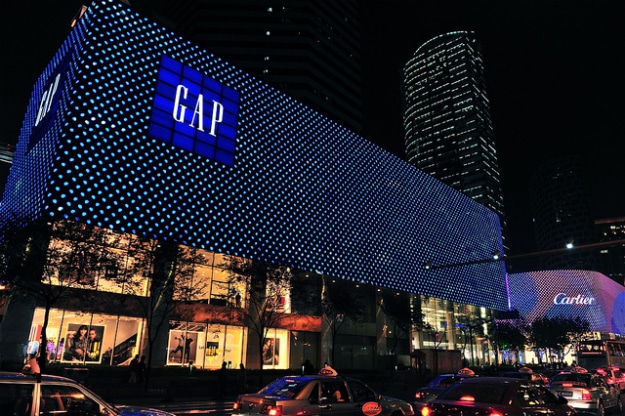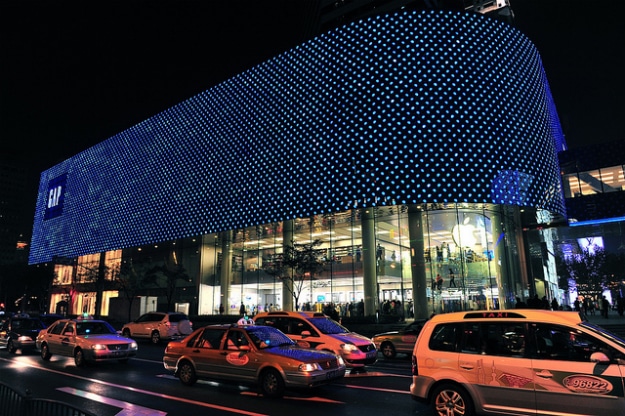A few weeks ago we started a series of articles that take a closer look at how you can save money by shopping online. We here at Bit Rebels are always looking to save a buck on our purchases and we have found that by using the Internet (and in some cases apps as well) we have saved a ton of cash just by making a few simple searches. There are a lot of multinational companies, such as Gap for example, which specifically turns to their following online to haul off huge discounts just because they are shopping online.
Gap has long been known in the fashion industry as the purveyor of comfortably nondescript clothing. In the era of major retail brands like Abercrombie making the tough decision to ditch their once prized logos, Gap is coming into its own as the champion of not dressing like a reject from Project Runway. After years of turning away from big box retailers and homogenous apparel in favor of more unique options, could the pendulum finally be swinging back in the other direction? Is Gap paradoxically becoming trendy for its very lack of trendiness? So it seems.
Let’s look at some of the factors that could be playing into this phenomenon. One of the biggest things to hit the fashion industry in the past year has been the idea of “Normcore” taking over the street style scene across the country. For those who are unfamiliar with the concept, Normcore is style movement that stands in diametric opposition to the avant garde styles of high fashion designers. Talking to New York Magazine, stylist and fashion editor Jeremey Lewis explains the driving attitude of Normcore, “Fashion has become very overwhelming and popular. Right now a lot of people use fashion as a means to buy rather than discover an identity and they end up obscured and defeated. I’m getting cues from people like Steve Jobs and Jerry Seinfeld. It’s a very flat look, conspicuously unpretentious, maybe even endearingly awkward. It’s a lot of cliché style taboos, but it’s not the irony I love, it’s rather practical and no-nonsense, which to me, right now, seems sexy. I like the idea that one doesn’t need their clothes to make a statement.”
While it might be a stretch to say that Gap is redirecting their creative direction to follow a street style movement, these kinds of things eventually work themselves up to major brand decision makers. Because Gap has always been a beacon of relative normalcy in dress, perhaps the brand is deciding to capitalize on normal’s newfound popularity.
While the marketing department at Gap may have forgotten how to use adverbs proper(ly), they have figured out how to take the pulse of style icons in America and how to put those trendsetters’ ideas into a savvy marketing campaign. In the press release accompanying the new campaign, Gap’s Global Chief Marketing Officer Seth Farbman describes the ethos of ‘Dress Normal’, “Finding your own version of ‘dress normal’ is an art – my normal is different from your normal, and that’s the essence of the campaign.
This fall, Gap celebrates dressing for yourself and finding those perfect items – a pair of jeans, a t-shirt – that make you feel confident to be your most authentic self.” If you were paying attention, that explanation sounds remarkably similar to Lewis’ description of the ideas behind the Normcore movement. In the relentless pursuit of authenticity, it seems that we’ve gone beyond infinite personalization and come full circle to expression through casual homogeneity. And here we were thinking Gap was going for simplicity with this campaign.
While you might not be undergoing an existential identity reformation, you have to applaud Gap for the campaign. It’s hip, it’s sexy, and it’s a little subversive, all without straying from its secure and long-held brand image. Now that’s a winning campaign strategy.
For the style conscious shopper that wants to cash in on Normcore for an affordable price, there are cashback offers and Gap coupons on sites like Ebates.com, Retail-Me-Not, Coupons.com, or KrazyCouponLady. While Gap is already targeting middle market shoppers, these online deals attract the millennial demographic that are ultra-conscious of street style trends but also internet native users who know how to ferret out innovative ways to save money by leveraging online tools. It’s an exciting new time for a brand that’s been dominating shopping malls and market shares since 1969. The San Francisco based company is doing all the right things if they want to stay at the top of the heap for another 45 years of retail fashion.


COMMENTS